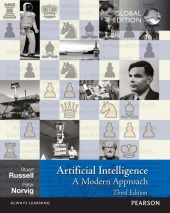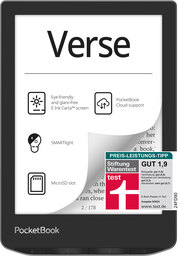Artificial Intelligence: A Modern Approach, Global Edition
Bibliografische Daten
ISBN: 9781292401133
Sprache: Englisch
Umfang: 1168
Format (T/L/B): 4.0 x 25.0 x 20.0 cm
gebundenes Buch
Erschienen am
13.05.2021
Themenwelten
- Belletristik & Lyrik
- Krimi
- Kinder- und Jugendbuch
- Bilderbücher
- Familie
- E-Reader
- Hörbuch für Erwachsene
- Hörbuch für Kinder
- Reise
- Landkarten & Stadtpläne
- Kalender
- Politik & Wirtschaft
- Gesundheit
- Demenz
- Kochen
- Natur & Tiere
- Regionalia
- Körper und Seele
- Hobby & Basteln
- Humor & Nettigkeiten
- Geschichte & Kultur
- Schulbuch
- Lernhilfen
- Pädagogik
- Psychologie
- Partnerschaft & Erotik
- Fremdsprachige Literatur
- Theologie & Philosophie
- Fantasy & SciFi
- Lifestyle
- New Adult
- Influencer & Blogger
- Graphic Novel
- Manga
- Tickets
- Sprachen
- Biographien
- Sport
- Wissen
- Recht
- Beruf & Karriere
- EDV
- Fahrzeuge
gebundenes Buch
Lieferbar innerhalb 2- 3 - Wochen (soweit beim Lieferanten verfügbar)
Nähere Informationen gewünscht?
Zu diesem Titel wurde keine nähere Beschreibung gefunden. Gerne beraten wir Sie persönlich unter Tel. 04131-754 74 0 oder per E-Mail unter info@luenebuch.de.
Auf die Wunschliste
75,96 € inkl. MwSt.
Inhalt
Chapter I Artificial IntelligenceIntroductionWhat Is AI?The Foundations of Artificial IntelligenceThe History of Artificial IntelligenceThe State of the ArtRisks and Benefits of AISummaryBibliographical and Historical NotesIntelligent AgentsAgents and EnvironmentsGood Behavior: The Concept of RationalityThe Nature of EnvironmentsThe Structure of AgentsSummaryBibliographical and Historical NotesChapter II Problem SolvingSolving Problems by SearchingProblem-Solving AgentsExample ProblemsSearch AlgorithmsUninformed Search StrategiesInformed (Heuristic) Search StrategiesHeuristic FunctionsSummaryBibliographical and Historical NotesSearch in Complex EnvironmentsLocal Search and Optimization ProblemsLocal Search in Continuous SpacesSearch with Nondeterministic ActionsSearch in Partially Observable EnvironmentsOnline Search Agents and Unknown EnvironmentsSummaryBibliographical and Historical NotesConstraint Satisfaction ProblemsDefining Constraint Satisfaction ProblemsConstraint Propagation: Inference in CSPsBacktracking Search for CSPsLocal Search for CSPsThe Structure of ProblemsSummaryBibliographical and Historical NotesAdversarial Search and GamesGame TheoryOptimal Decisions in GamesHeuristic Alpha--Beta Tree SearchMonte Carlo Tree SearchStochastic GamesPartially Observable GamesLimitations of Game Search AlgorithmsSummaryBibliographical and Historical NotesChapter III Knowledge, Reasoning and PlanningLogical AgentsKnowledge-Based AgentsThe Wumpus WorldLogicPropositional Logic: A Very Simple LogicPropositional Theorem ProvingEffective Propositional Model CheckingAgents Based on Propositional LogicSummaryBibliographical and Historical NotesFirst-Order LogicRepresentation RevisitedSyntax and Semantics of First-Order LogicUsing First-Order LogicKnowledge Engineering in First-Order LogicSummaryBibliographical and Historical NotesInference in First-Order LogicPropositional vs. First-Order InferenceUnification and First-Order InferenceForward ChainingBackward ChainingResolutionSummaryBibliographical and Historical NotesKnowledge RepresentationOntological EngineeringCategories and ObjectsEventsMental Objects and Modal Logicfor CategoriesReasoning with Default InformationSummaryBibliographical and Historical NotesAutomated PlanningDefinition of Classical PlanningAlgorithms for Classical PlanningHeuristics for PlanningHierarchical PlanningPlanning and Acting in Nondeterministic DomainsTime, Schedules, and ResourcesAnalysis of Planning ApproachesSummaryBibliographical and Historical NotesChapter IV Uncertain Knowledge and ReasoningQuantifying UncertaintyActing under UncertaintyBasic Probability NotationInference Using Full Joint DistributionsIndependence 12.5 Bayes' Rule and Its UseNaive Bayes ModelsThe Wumpus World RevisitedSummaryBibliographical and Historical NotesProbabilistic ReasoningRepresenting Knowledge in an Uncertain DomainThe Semantics of Bayesian NetworksExact Inference in Bayesian NetworksApproximate Inference for Bayesian NetworksCausal NetworksSummaryBibliographical and Historical NotesProbabilistic Reasoning over TimeTime and UncertaintyInference in Temporal ModelsHidden Markov ModelsKalman FiltersDynamic Bayesian NetworksSummaryBibliographical and Historical NotesMaking Simple DecisionsCombining Beliefs and Desires under UncertaintyThe Basis of Utility TheoryUtility FunctionsMultiattribute Utility FunctionsDecision NetworksThe Value of InformationUnknown PreferencesSummaryBibliographical and Historical NotesMaking Complex DecisionsSequential Decision ProblemsAlgorithms for MDPsBandit ProblemsPartially Observable MDPsAlgorithms for Solving POMDPsSummaryBibliographical and Historical NotesMultiagent Decision MakingProperties of Multiagent EnvironmentsNon-Cooperative Game TheoryCooperative Game TheoryMaking Collective DecisionsSummaryBibliographical and Historical NotesProbabilistic ProgrammingRelational Probability ModelsOpen-Universe Probability ModelsKeeping Track of a Complex WorldPrograms as Probability ModelsSummaryBibliographical and Historical NotesChapter V Machine LearningLearning from ExamplesForms of LeamingSupervised Learning .Learning Decision Trees .Model Selection and OptimizationThe Theory of LearningLinear Regression and ClassificationNonparametric ModelsEnsemble LearningDeveloping Machine Learning SystenSummaryBibliographical and Historical NotesKnowledge in LearningA Logical Formulation of LearningKnowledge in LearningExmplanation-Based LeaeningLearning Using Relevance InformationInductive Logic ProgrammingSummaryBibliographical and Historical NotesLearning Probabilistic ModelsStatistical LearningLearning with Complete DataLearning with Hidden Variables: The EM AlgorithmSummaryBibliographical and Historical NotesDeep LearningSimple Feedforward NetworksComputation Graphs for Deep LearningConvolutional NetworksLearning AlgorithmsGeneralizationRecurrent Neural NetworksUnsupervised Learning and Transfer LearningApplicationsSummaryBibliographical and Historical NotesReinforcement LearningLearning from RewardsPassive Reinforcement LearningActive Reinforcement LearningGeneralization in Reinforcement LearningPolicy SearchApprenticeship and Inverse Reinforcement LeamingApplications of Reinforcement LearningSummaryBibliographical and Historical NotesChapter VI Communicating, perceiving, and actingNatural Language ProcessingLanguage ModelsGrammarParsingAugmented GrammarsComplications of Real Natural LanguagrNatural Language TasksSummaryBibliographical and Historical NotesDeep Learning for Natural Language ProcessingWord EmbeddingsRecurrent Neural Networks for NLPSequence-to-Sequence ModelsThe Transformer ArchitecturePretraining and Transfer LearningState of the artSummaryBibliographical and Historical NotesRoboticsRobotsRobot HardwareWhat kind of problem is robotics solving?Robotic PerceptionPlanning and ControlPlanning Uncertain MovementsReinforcement Laming in RoboticsHumans and RobotsAlternative Robotic FrameworksApplication DomainsSummaryBibliographical and Historical NotesComputer VisionIntroductionImage FormationSimple Image FeaturesClassifying ImagesDetecting ObjectsThe 3D WorldUsing Computer VisionSummaryBibliographical and Historical NotesChapter VII ConclusionsPhilosophy, Ethics, and Safety of AlThe Limits of AlCan Machines Really Think?The Ethics of AlSummaryBibliographical and Historical NotesThe Future of AIAl ComponentsAl ArchitecturesA Mathematical BackgroundA.1 Complexity Analysis and O0 NotationA.2 Vectors, Matrices, and Linear AlgebraA.3 Probability DistributionsBibliographical and Historical Notes B Notes on Languages and AlgorithmsB.1 Defining Languages with Backus-Naur Form (BNF)B.2 Describing Algorithms with PseudocodeB.3 Online Supplemental Material BibliographyIndex 






















